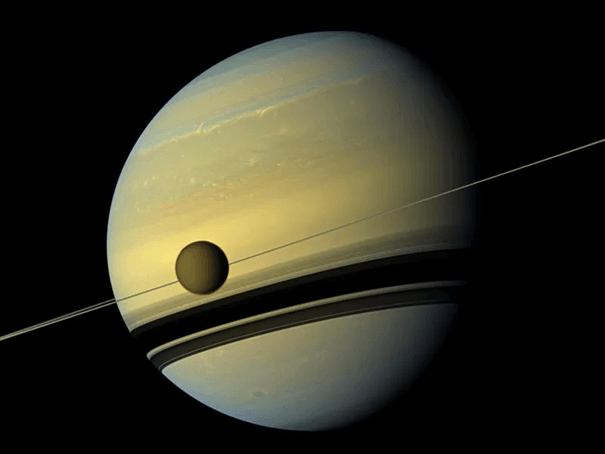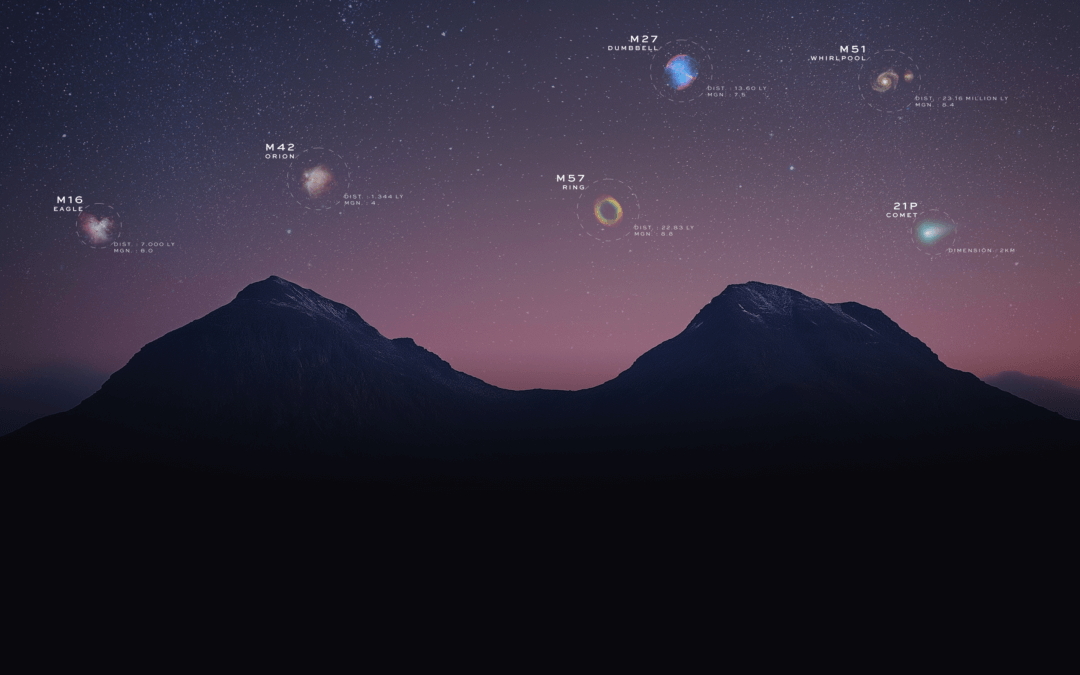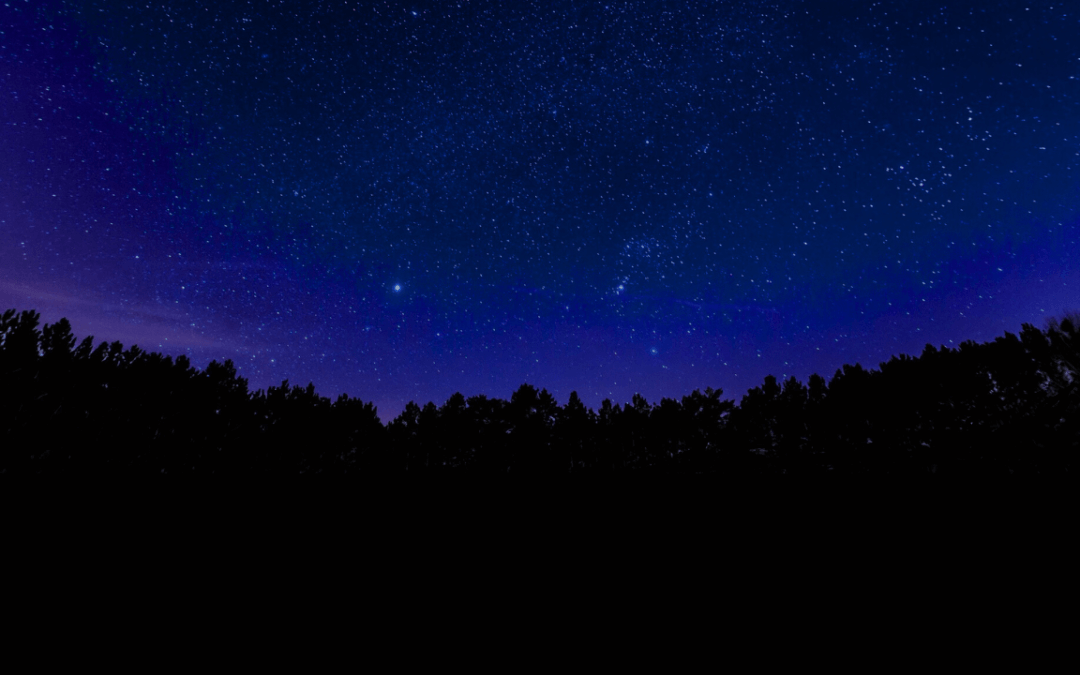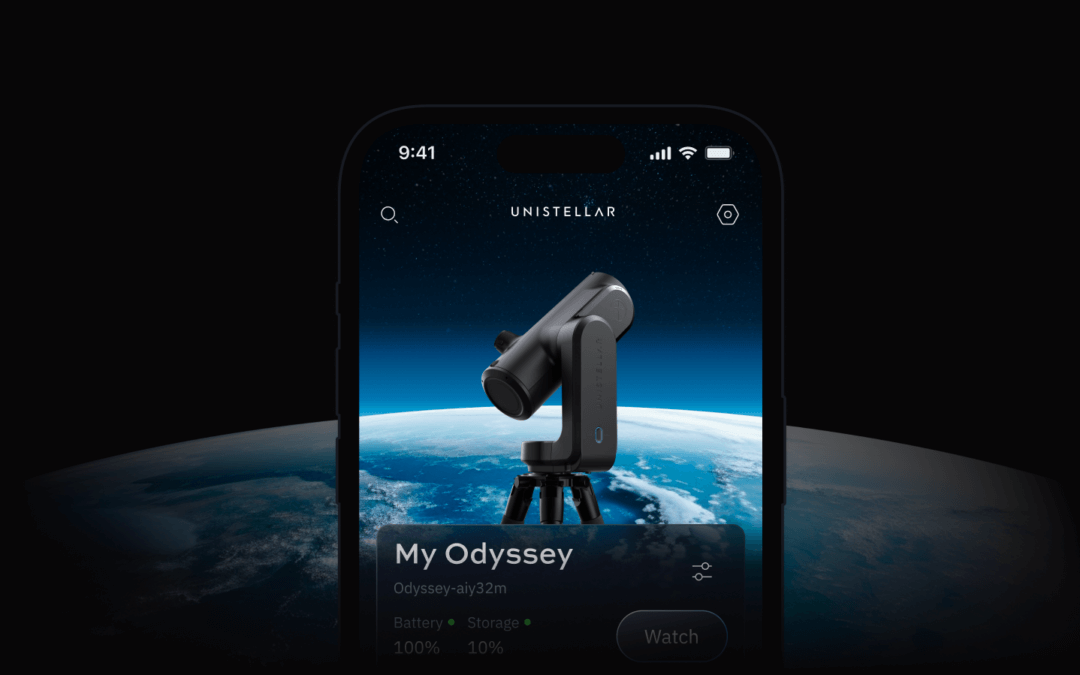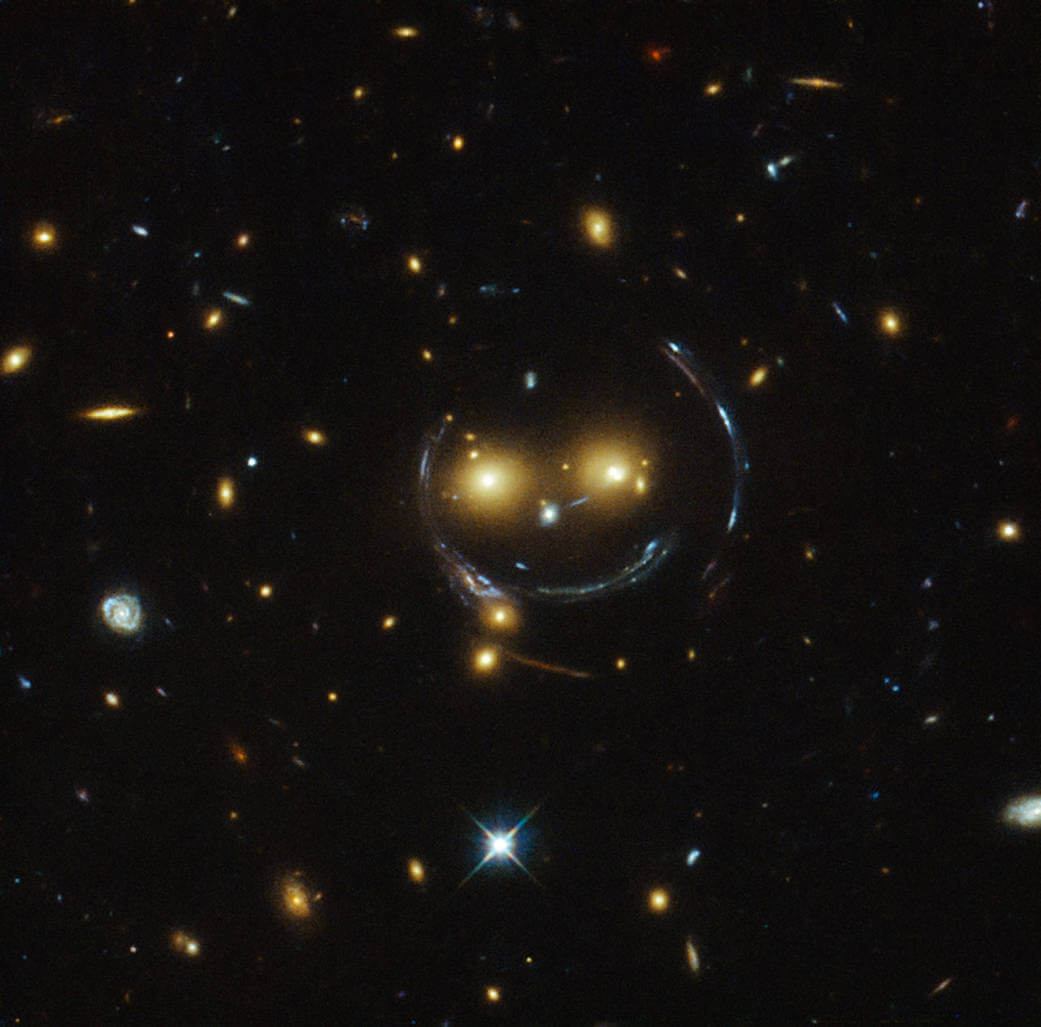Galaxy season is upon us, the time of year when the sky boasts the most spectacular galactic targets for stargazers to enjoy. So join us on a galactic voyage and feast your eyes on some of our favorite galaxies to look at through the eVscope and eQuinox.
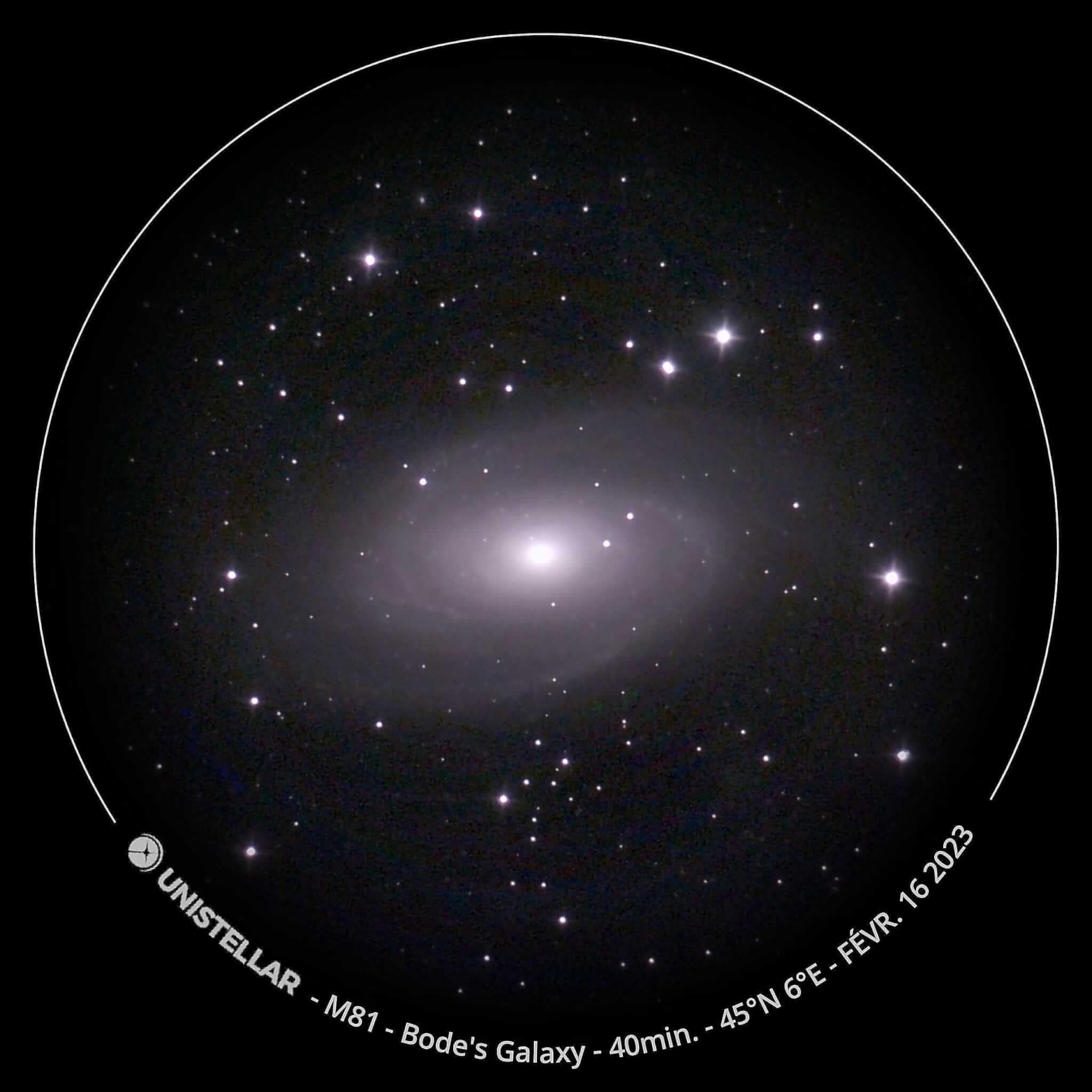
An eVscope image of Bode’s Galaxy in Ursa Major.
The Cigar Galaxy & Bode’s Galaxy
Ursa Major is home to several Northern Hemisphere targets, like the Cigar and Bode’s Galaxy. Even though the Cigar Galaxy is a spiral galaxy, we view this galaxy from its side, so it appears to look like a cigar from our vantage point. That means we see the Cigar “edge on”, as opposed to “face on.”
Nearby the Cigar galaxy is Bode’s galaxy, a spiral galaxy about half the size of the Milky Way. Even though they are 12 million light years away, with a set of binoculars, you may be able to see both these galaxies at the same time! But with your Unistellar telescope, it will take just a moment for you to zoom in and spot these galaxies’ distinct details and shapes.
The Whirlpool Galaxy
The Whirlpool galaxy was named as such because of its sweeping-well defined spiral arms, brimming with new stars. And it seems to be sucking its dwarf galaxy neighbor into it, just like a whirlpool!
Located over 31 million light years away in the constellation Canes Venatici (nearby the handle of Ursa Major’s Big Dipper), this bright galaxy is a great target for your Unistellar telescope – after just a moment with enhanced vision, you will start to see the spiral arms of the « face on » Whirlpool and its companion. Eventually, these two galaxies will merge into one.
The Black Eye Galaxy
The Black Eye galaxy, sometimes called the Evil Eye galaxy, is also a spiral galaxy – but with a key difference. Bands of opaque dust partially block the light from this galaxy’s bright core, the likely home of a supermassive black hole, lending to its namesake. This contrasting dark “black eye” to the galaxy’s shining nucleus can be seen with just a few minutes of observation with your Unistellar telescope.
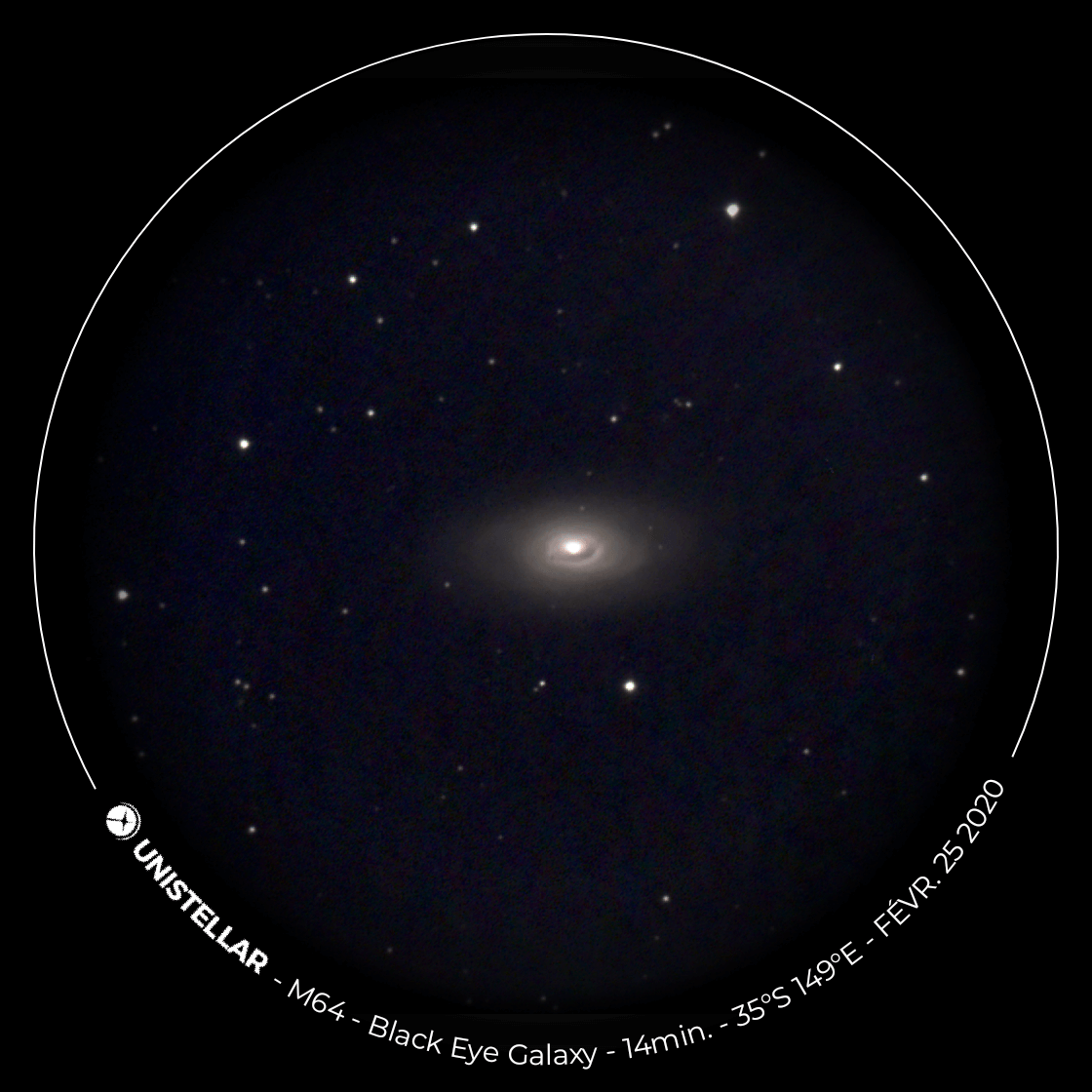
The Black Eye Galaxy as seen through the eVscope.
Centaurus A
Did you know that galaxies come in all shapes and sizes? Centaurus A, in the Southern Hemisphere, is usually referred to as an irregular or lenticular galaxy – a galaxy somewhere between an elliptical and a spiral (elliptical galaxies are made of old stars, without the gas, dust, and shape of the grand spiral galaxies we have seen). Centaurus A is thought to have its odd shape as a result of a past merger between two different types of galaxies.
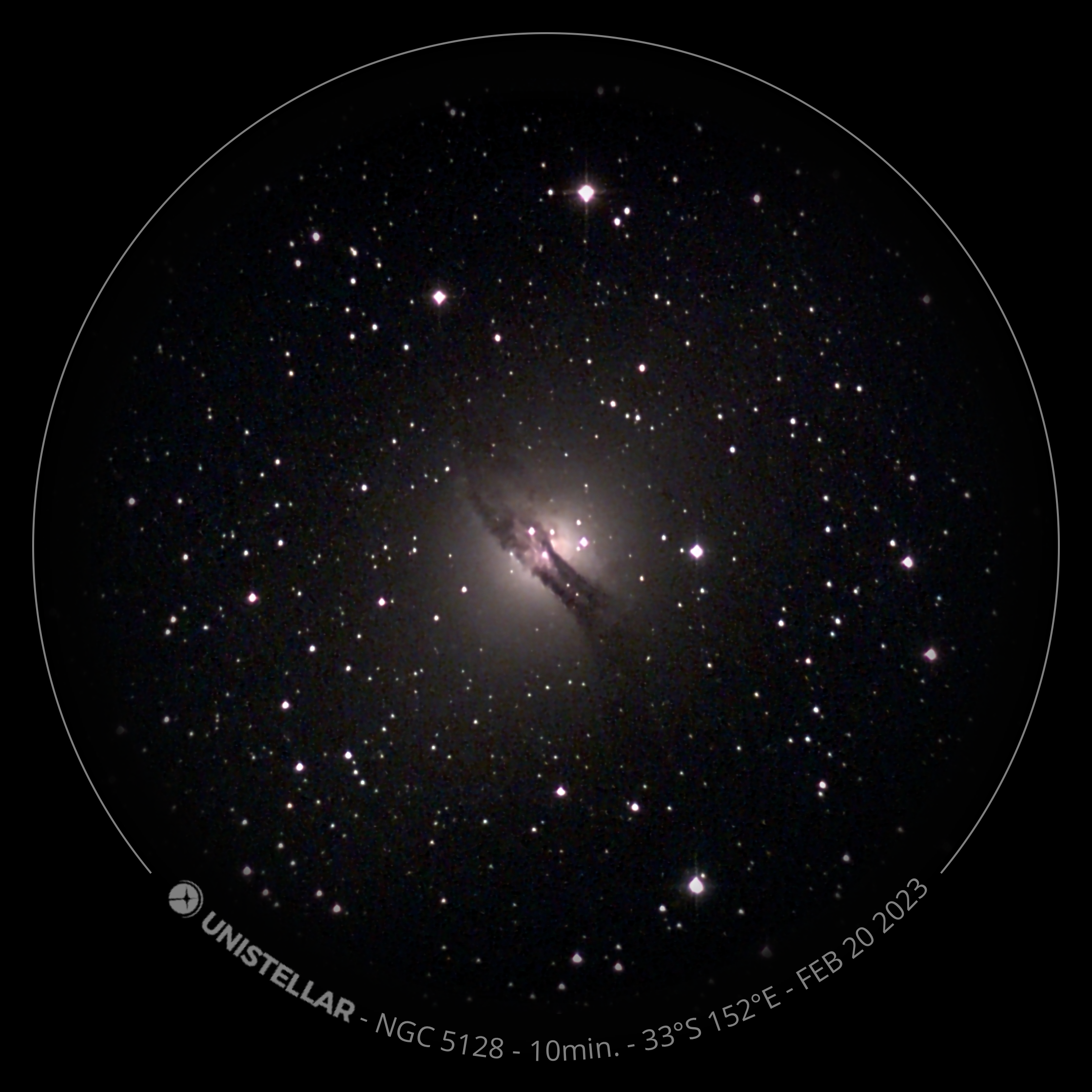
Centaurus A, imaged by Darren R. using his Unistellar Telescope from Australia.
Can’t Get Enough?
If your galactic voyage is still not complete, you may want to check out these other fascinating targets:
Sculptor Galaxy (Southern Hemisphere)
Triangulum Galaxy (Southern Hemisphere)
Sombrero Galaxy (Northern Hemisphere)
Whale Galaxy (Northern Hemisphere)
Sunflower Galaxy (Northern Hemisphere)
Hamburger Galaxy (Northern Hemisphere)
Pinwheel Galaxy (Northern Hemisphere)
Southern Pinwheel (Southern Hemisphere)
Small & Large Magellanic Clouds (Southern Hemisphere)
The best hemisphere to observe from this time of year is in parentheses, but you can check in the Unistellar app to see if these are visible at your location! As always, feel free to tag us on social if you capture any glances of these, or other, captivating objects!
Further readings
Les ombres de Titan
Cet été, la planète aux anneaux Saturne occupe le devant de la scène dans notre ciel nocturne, offrant aux astronomes amateurs une occasion rare d'observer des événements transitoires fascinants.
3 raisons d’observer ce mois-ci
Sur Jupiter : Imaginez des lunes projetant leur ombre sur une planète géante. En ce moment, les lunes de Jupiter offrent un spectacle exceptionnel : des éclipses visibles même depuis des zones urbaines. Chaque passage d'une lune devant le Soleil crée une ombre qui danse sur la surface de Jupiter. Consultez notre article dédié pour ne rater aucun passage d'Io, Europe ou Ganymède.
La Nuits des Étoiles 2024
À l’occasion de la 34ème édition des Nuits des Étoiles, UNISTELLAR, renouvelle son partenariat avec l'Association Française d’Astronomie.
Unistellar Community Included In Multiple Scientific Papers
Did you know Unistellar Citizen Astronomers are often cited in published scientific papers? Find out how you can contribute too!
Nouvelle Mise à Jour de l’App Unistellar : Version 3.0
The latest Unistellar App Update, version V3.0, is now live. Explore a smooth stargazing experience !
Halloween Observing Guide: Spooky Deep-Sky Objects
These Halloween deep-sky objects will add some light to those dark, spooky nights. Treats, tricks, and telescopes await!
